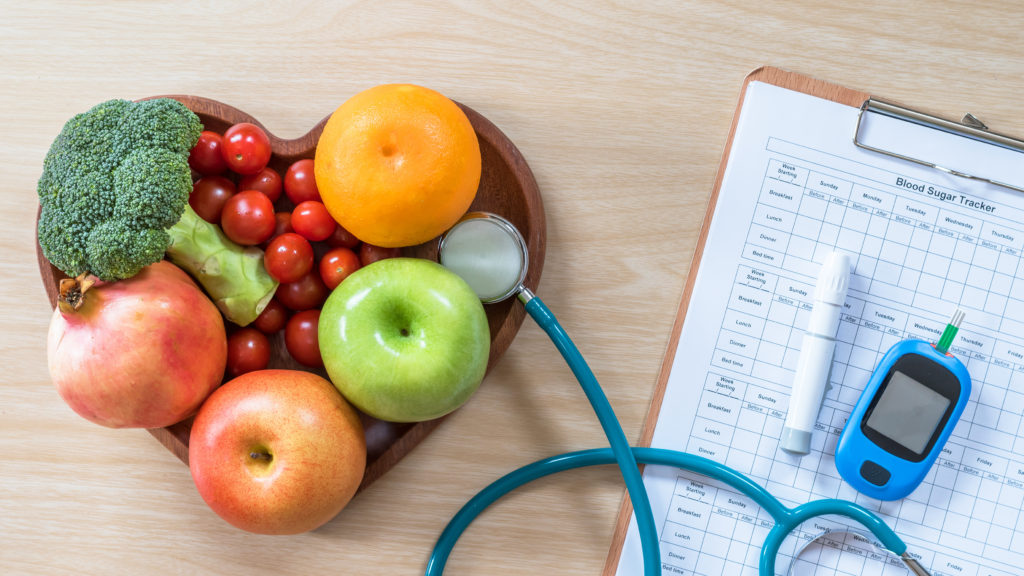Diabetes
Type 2 diabetes is a major cause of illness and death worldwide. It is estimated that 1 in 10 people have diabetes in the United States and 1 in 4 have diabetes over the age of 65. This disease has a significant impact on a person’s quality of daily life from frequent doctor’s visits, high medication costs, high pill burden and missed work from the complications of diabetes. This article is a first, in a series on Type 2 diabetes. Learning about this common illness can help you reduce your risk of developing this largely avoidable disease.
You may have heard a friend or relative mention that they have “sugar diabetes” or worse, you may know someone who has suffered from severe complications of diabetes, such as having a toe amputated or being hospitalized for a very high blood sugar. What exactly is Type 2 Diabetes and what is happening in the body when a person has this disease?
What is type 2 Diabetes?
When you eat, the body breaks down food into a simple sugar called glucose. Sugar or glucose is the human body’s primary form of fuel or energy. Diabetes is an illness that disrupts the way our body uses glucose. Normally, glucose moves from our bloodstream after we eat, into our cells with the help of a hormone called insulin. In Type 2 diabetes, the body stops responding to insulin and or stops making adequate amounts of insulin. The build up of glucose in the blood, rather than in our cells where it is needed, causes medical complications. The human body also doesn’t run as efficiently when our cells don’t have enough fuel.
How do I know if I have Diabetes?
Diabetes can be diagnosed by a blood test or a finger stick in your doctor’s office. A normal blood sugar when you are fasting (meaning you haven’t had anything to eat for over eight hours) is less than 100. A diabetic has a blood sugar over 126 when fasting. A normal blood sugar two hours after you have eaten a meal is less than 140. Diabetes is defined when a random blood sugar is over 200. There is another test that doctors perform to diagnose diabetes and that is a hemoglobinA1C. A hemoglobinA1c value greater than 6.5 is diagnostic for diabetes.
Why care about this disease?
Physicians screen for type 2 diabetes because it can cause a multitude of short and long term problems. Let’s look at some of the symptoms you can experience when your blood sugar is high.
Short term effects of Diabetes:
High blood sugar levels or hyperglycemia can lead to multiple temporary symptoms that are alarming to patients.
Thirst and frequent urination
When a person’s blood sugar is high, the excess sugar along with other fluids from the body is excreted in the urine. A diabetic will then experience a combination of extreme thirst with frequent urination.
Blurred vision
High blood sugars can affect the eye by causing the lens of the eye to swell. This can lead to blurred vision.
Unexplained weight loss
In cases where the blood sugar is extremely high, the body is unable to get sugar or energy into cells and it starts to burn muscle and fat. Many patients who are diagnosed with diabetes for the first time go through a period of unexplained weight loss.
For the most part, these symptoms of uncontrolled high blood sugar are reversible when treated. There are however long term effects of diabetes that are irreversible.
Long term effects of type 2 Diabetes:
The most common complication of diabetes is peripheral neuropathy. Chronic high blood sugar levels can lead to nerve damage and patients can experience tingling and numbness in the fingers, toes and or feet. The loss of sensation coupled with poor healing from other diabetic complications makes it easy to get foot ulcers. In some cases, a diabetic foot ulcer can lead to toe or foot amputation.
Type 2 Diabetes also puts you at high risk for stroke, heart attack, end stage kidney disease, and vision problems.
As a family physician, I like to arm my patients with ways to prevent illness before it occurs.
Here are two steps you can take to prevent type 2 diabetes and the complications of this disease.
Step 1:
Determine your level of risk for this disease and work on reducing the changeable risk factors!
Some of your biggest risk factors for diabetes are 1) being overweight or obese 2) a sedentary lifestyle 3) a family history of diabetes.3) a history of hypertension 4) a history of hyperlipidemia
Step 2:
See a physician regularly so that you can be screened for diabetes if your doctor feels this is necessary. The current guidelines state that anyone who is overweight, age 40-70 should be screened. Also, any adult with a history of hypertension or hyperlipidemia should also be screened.
Diabetes increases your risk for many serious health problems. The good news? With lifestyle changes, risk can be significantly reduced. If you have diabetes, with correct treatment and recommended lifestyle changes, many people with diabetes are able to prevent or delay the onset of complications.
References:
Centers for Disease Control and Prevention.. 2017 July. National Diabetes statistics report, 2017. Retrieved from URL www.cdc.gov/diabetes/pdfs/data/statistics/national-diabetes-statistics-report.pdf
National Institute of Diabetic and Digestive and Kidney Diseases. 2016 November. What is Diabetes? Retrieved from URL. https://www.niddk.nih.gov/health-information/diabetes/overview/symptoms-causes
UptoDate. 2019 April. Pathogenesis of type 2 diabetes. Retrieved from URL
https://www.medicalnewstoday.com/articles/310894.php
https://www.health.harvard.edu/diabetes/rising-blood-sugar-how-to-turn-it-around 2019 Harvard Health. Retrieved from URL.
Dr. Joi Johnson-Weaver is a family physician in Columbia, Maryland with a Direct Primary Care practice that works outside of the traditional insurance model. You can learn more about her practice at resolvemd.org.
RELATED ARTICLES:
Navigating the New Healthcare Landscape
Doc Aims for Old-School Medicine in Modern Age


